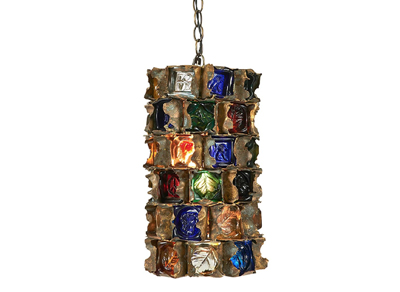
NEW YORK – Minimalism went to the max in the Brutalist design style that was hugely popular in the midcentury era, particularly the 1950s and ’60s. Distinguished by an austere, brutal look that swapped ornate details for a crude and plain look, often with jagged edges, Brutalist decorative goods for the home achieved elegance through simplicity.
Often wrought by hand, Brutalist lighting in particular, transformed metals into desirable chandeliers, wall sconces and lamps that look as stunning now as the day they were made. Collectors and those with a keen flair for design routinely seek out fine vintage examples today.
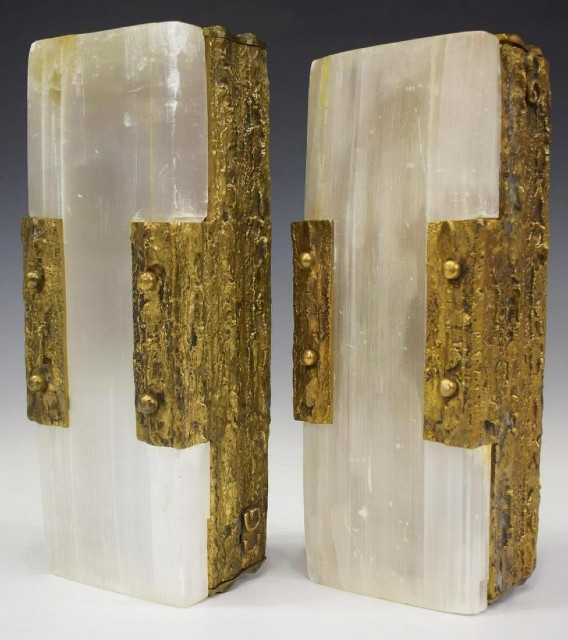
Among the most renowned of the Brutalist lighting designers was Tom Greene. Armed with an oxyacetylene torch, he molded and cut free-form shapes into brass, copper and bronze for his lighting fixtures, using the torch heat to create color variations on the metal surfaces. Transferring design skills he honed from making jewelry and dental prosthetics, he created these large and sculptural works of art, in his free time. Before he got his big break that turned him away finally from making dental items, he began making lighting fixtures at night in his garage for high-end retailers Monteverde Young and Paul Ferrante Lighting Fixtures, among other clients. His designs would later be made by Feldman Lighting and Lightolier and in the 1970s, he got a commission to outfit the Monte Carlo Casino in Las Vegas with his fixtures, some of them measuring over 20 feet tall.
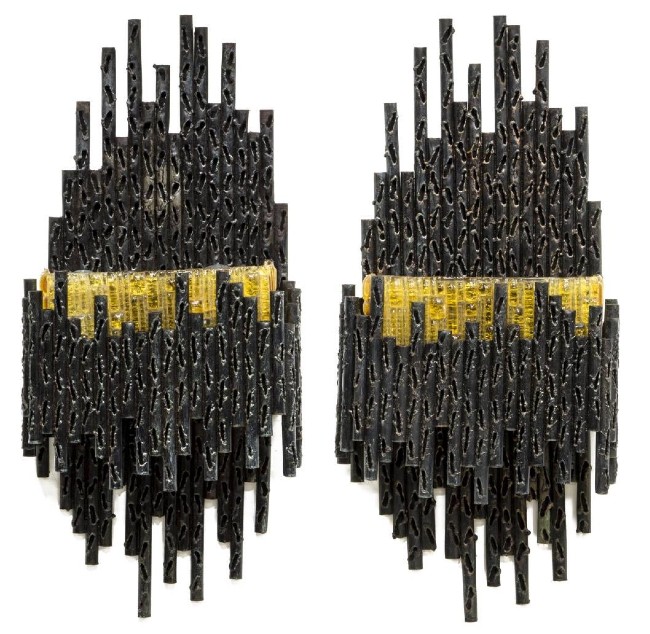
The circa 1960 chandelier shown here by Greene that was made for Monteverdi Youngy in the 1960s features a beautiful, hand torched patina on the brass. Each of the chandelier’s 16 arms is decorated in a floral motif with multiple layers of leaves.
Curtis Jere, aka C. Jeré, was the moniker given to a metalwork company that made hand-hammered metal lighting fixtures, wall sculptures and other decorative items for the home. Brothers-in-law Curtis Freiler and Jerry Fels founded their company in 1963, combining their names. The two artists quickly became sought after for their multidimensional and eclectic “metalworks of art.” A Curtis Jere “Cloud” brass chandelier below, 13 inches tall and having a 23-inch-diameter, sold for $1,235 + the buyer’s premium in February 2020 at Palm Beach Modern Auctions. Their Cubist-style chandeliers in nickel-plated chrome are also highly coveted.
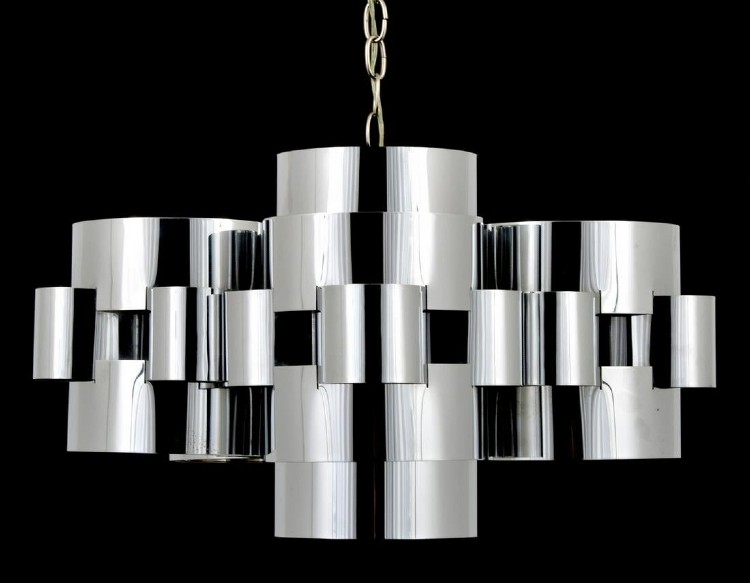
Among midcentury European lighting designers whose vintage works still pique interest today is Danish designer Svend Aage Holm Sørensen (1913-2004). Embodying the sleek lines emblematic of Scandinavian design, a set of his three table lamps brought $7,000 + the buyer’s premium in May 2019 at Wright. Italian designer Marcello Fantoni is well-known in particular for his wall lamps that featured Murano glass such as this pair of Brutalist cut iron wall lamps sconces, circa 1970s, that took $1,600 + the buyer’s premium in December 2017 at Austin Auction Gallery.
Belying its crude appearance, this kind of metalwork was time-consuming to create and the artists often spent as much time on the metal chains for hanging lamps as the shades. A Felipe Delfinger for Feders hanging light, made in Mexico in the 1970s, of welded and brazed metal with glass elements, made $1,500 + the buyer’s premium in December 2017 at Treadway Toomey Auctions. The fixture (below) has a long chain and cord while the glass pieces have impressed designs, including leaves, flowers, fish, people, a crab, a bow and arrow, and a peace sign.
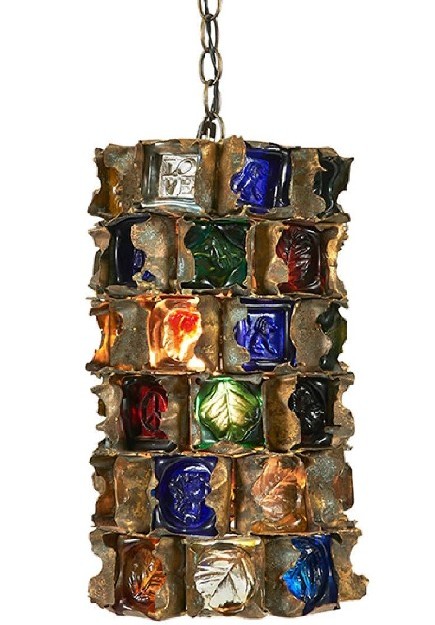
Two late 20th Century wrought iron light fixtures, also in the Brutalist style, featuring a hanging four-tier candle holder and a wall sconce, realized $1,800 + the buyer’s premium in May 2019 at John Moran Auctioneers Inc.
Contemporary artists are keeping the Brutalist design aesthetic alive. Artist Barney Zeitz (b. 1951), now living on Martha’s Vineyard, Mass., has long been making Brutalist style chandeliers such as this electric chandelier made with steel, bronze and glass (below). This example realized $1,700 + the buyer’s premium in October 2020 at Collective Hudson. The shapes were cut from milled steel and the unusual chain is custom-made into spiraling or fluted shapes. In his art lighting, the artist frequently marries hand-forged metalworking techniques with fused and slumped stained glass techniques.
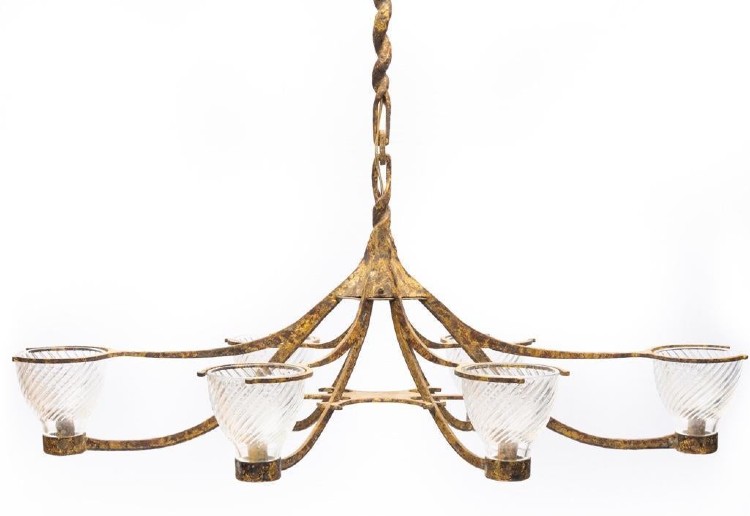
Brutalist lighting may have soared to popularity in the mid-20th century but its aesthetic is such that its appeal is timeless.


